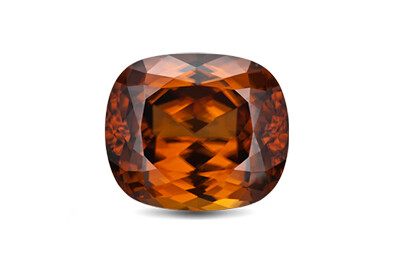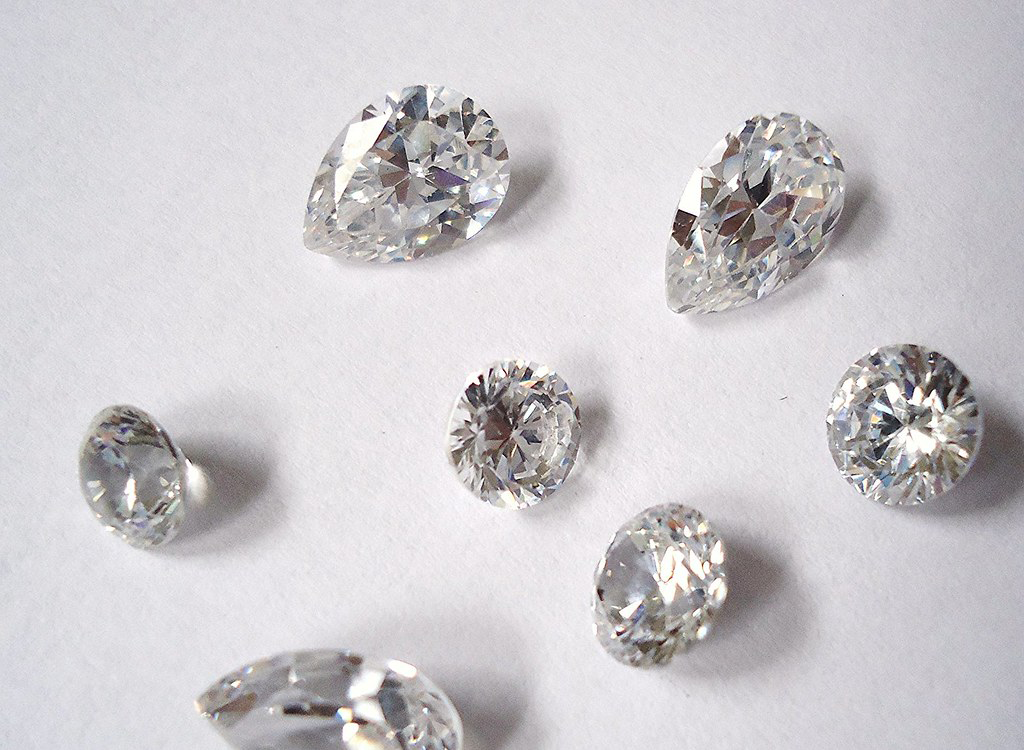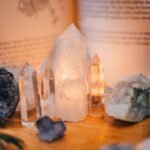Zircon Gemstones is a natural gemstone known for its brilliance and wide color range. Often mistaken for cubic zirconia, zircon is a unique mineral with exceptional optical properties. Learn about zircon’s meaning, properties, types, jewelry, and value.
Zircon Gemstones: The Secret to Dazzling Jewelry!
The Zircon Gemstones have captivated people’s attention for millennia due to its fascinating Colors and compelling brightness. Famous for its remarkable likeness to diamonds and a wide variety of colors, Zircon Gemstones is a gemstone with a long history that is still highly valued in the jewelry industry. This piece takes the reader on a tour through the fascinating world of zircon, including its geological history, cultural importance, contemporary applications, and maintenance advice.
What Is Zircon?
Zircon is a naturally occurring gemstone composed of zirconium silicate. This gem is admired for its high refractive index, exceptional brilliance, and diverse color variations. Unlike cubic zirconia, which is a synthetic diamond simulant, zircon is a genuine mineral that forms deep within the Earth’s crust. Zircon is one of the oldest minerals on Earth, dating back over 4.4 billion years. It is widely used in fine jewelry, especially as an affordable alternative to diamonds due to its remarkable fire and brilliance.
Introduction and Identifying Zircons
Due to its high dispersion and refractive index, zircons are distinguished by their remarkable brightness and fire. They frequently display a variety of colors, such as red, brown, blue, green, and yellow. Zircon may also have no color. On the Mohs hardness scale, it falls between 6.5 and 7.5.
Zircon vs. Cubic Zirconia: Understanding the Difference
Many people confuse zircon with cubic zirconia, but they are entirely different materials. Zircon is a naturally occurring gemstone with a complex crystal structure, whereas cubic zirconia is a lab-created synthetic diamond substitute. Zircon exhibits double refraction, which enhances its brilliance, while cubic zirconia lacks this natural optical effect. Additionally, zircon is rarer and more valuable than cubic zirconia, making it a prized gemstone among collectors and jewelers.
Zircon vs. Cubic Zirconia: What’s the Difference?
While the names are similar, zircon and cubic zirconia (often abbreviated as CZ) are entirely different materials. Here’s a breakdown of the main differences:
Zircon:
- Natural Gemstone: Zircon is a naturally occurring gemstone, with a history dating back billions of years.
- Hardness: On the Mohs scale, zircon ranks between 6 to 7.5, depending on its color and quality. It’s durable but softer than some other gemstones like sapphire or diamond.
- Brilliance: Zircon is known for its high refractive index, which gives it an exceptional brilliance and sparkle, often rivaling that of diamond.
- Color Variations: Zircon naturally comes in a wide range of colors, from colorless to shades of blue, green, and yellow, which makes it highly versatile in jewelry.
Cubic Zirconia:
- Synthetic Material: Cubic zirconia is a artificial material, created to resemble the appearance of diamonds. It is composed of zirconium dioxide.
- Hardness: Cubic zirconia is harder than zircon, with a rating of 8 to 8.5 on the Mohs scale, making it more durable than zircon.
- Brilliance: While cubic zirconia has a high refractive index, it does not have the same sparkle as zircon due to its different crystalline structure. The brilliance is often compared to diamond but lacks the natural fire of zircon.
- Color: Cubic zirconia is generally available in colorless form, although it can be created in various colors, it doesn’t have the natural color depth and variation of zircon.
In essence, while cubic zirconia can mimic the appearance of a gemstone like zircon, it lacks the same natural properties and history, making zircon a more valuable and distinctive choice for high-quality jewelry.
What Makes Zircon Unique?
Zircon is a natural gemstone that stands out in the world of gemstones due to its remarkable brilliance, historical significance, and wide range of colors. Unlike synthetic alternatives, zircon is a naturally occurring gemstone, known for its incredible fire and sparkle, often rivaling that of diamond. It is the oldest known gemstone, with some zircon stones dating back over 4.4 billion years, making it not only a beautiful stone but also a piece of earth’s ancient history. The brilliance of zircon is due to its high refractive index, which allows it to reflect light in dazzling ways. This characteristic, combined with its availability in various colors, makes zircon a highly versatile choice for birthstone jewelry and fine adornments.
Zircon is known for its rich history and its vibrant colors. It has been used in jewelry for centuries, prized for its natural beauty. Many associate it with metaphysical properties, such as promoting wisdom and protection. In modern times, zircon jewelry has become a popular choice for engagement rings, earrings, necklaces, and pendants due to its durability and brilliance.
Identifying Zircons
Due to its high dispersion and refractive index, zircons are distinguished by their remarkable brightness and fire. They frequently display a variety of colors, such as red, brown, blue, green, and yellow. Zircon may also have no color. On the Mohs hardness scale, it falls between 6.5 and 7.5.
Different Colors of Zircon
One of the most fascinating aspects of zircon is its vast array of colors, making it a versatile gemstone that suits different styles and preferences. Zircon comes in many colors, including:
- Colorless Zircon: Often mistaken for diamond due to its similar brilliance and clarity, colorless zircon is a popular choice for those who want the sparkle of a diamond but at a lower price point.
- Blue Zircon: This is one of the most sought-after colors of zircon, ranging from light sky blue to a deep vibrant blue. Blue zircon is considered the most valuable and is a favorite for birthstone jewelry for those born in December.
- Green Zircon: Green zircon is less common but highly valued for its deep, natural green hue. Its vibrancy adds a rich touch to zircon jewelry.
- Yellow Zircon: This color ranges from pale yellow to golden hues, giving the stone a warm, sunny appearance. It is a great alternative for those who prefer warmer tones.
- Red and Brown Zircon: Less commonly seen, red zircon and brown zircon offer earthy tones that are perfect for vintage or rustic-style jewelry designs.
Each color of zircon carries its own distinct charm, making it a versatile gemstone that can be incorporated into a wide variety of jewelry, from modern designs to vintage-inspired pieces.
Properties of Low, Intermediate, and High Zircons
Zircon is a multifaceted gemstone that is classified according to the degree of structural alteration caused by radiation damage. Each of these three categories low, moderate, and high zircons has its special qualities.
Low Zircons
Low zircons: With a refractive index ranging from 1.78 to 1.90, these zircons are less dense and softer due to extensive radiation damage. They frequently have numerous inclusions and flaws, giving them a hazy or opaque appearance that reduces their clarity. Low zircons are more susceptible to heat and chemicals and are less resilient due to structural alterations. They are found in sedimentary and metamorphic rocks and are usually older.
Intermediate Zircons
In between low and high zircons, intermediate zircons provide a balance. Their refractive index falls between 1.90 to 1.98, and their density is modest. These zircons typically contain fewer inclusions than low zircons and can range in clarity from clear to slightly hazy. Though not as much as high zircons, they are more resilient and robust than low zircons. The majority of intermediate zircons are found in metamorphic and igneous rocks.
High Zircons
With a refractive index ranging from 1.93 to 2.01, high zircons are dense and extremely hard due to their little radiation damage. They usually have minimal imperfections and are prized for their clarity and vivid hues, which include blue, green, yellow, and red. These zircons are perfect for jewelry since they are strong and resistant to heat and chemicals. High zircons are found in igneous rocks, which are frequently connected to volcanic activity. They are typically younger.
Geological Origins
Numerous geological settings, including igneous rocks like granite and syenite as well as sedimentary deposits left over after these rocks weather, are where zircon gemstones are created. Metamorphic rocks also include zircon crystals. Some zircon crystals date back billions of years, making the mineral a reliable measure of geological age due to its stability and tenacity.
Zircon Meaning and Symbolism
Zircon has been associated with wisdom, protection, and spiritual growth throughout history. Many cultures believe that zircon enhances mental clarity, attracts prosperity, and fosters inner peace. In ancient times, it was considered a talisman for travelers, offering protection from harm and evil spirits. Today, zircon remains a popular gemstone for those seeking grounding energy, creativity, and positive transformation.
Benefits of Zircon
Are There Synthetic Zircon Gemstones?
There aren’t any commonly accessible synthetic zircon gemstones on the market. There has never been a commercial production of synthetic zircon, as it is a naturally occurring mineral. Natural zircon stones may, however, be treated to improve or alter their color, such as by heating them. In the gem business, this procedure is frequently used to enhance the look of gemstones, increasing their desirability for jewelry. While certain gemstones have synthetic counterparts, such as cubic zirconia (CZ) for diamonds, there isn’t a synthetic substitute for natural zircon.
December Birthstones
Zircon, along with turquoise and tanzanite, is one of the traditional birthstones for December. Zircon is prized for its beauty and historical significance, and it is well-known for its brightness and variety of hues. The gemstone is a flexible option for jewelry since it is available in a variety of colors, including blue, green, yellow, brown, red, and colorless.

How to Care for Zircon Jewelry
Although zircon is durable, it requires proper care to maintain its brilliance:
Protect from impact: Avoid dropping or knocking zircon jewelry against hard surfaces.
Avoid harsh chemicals: Keep zircon away from acids and cleaning agents.
Store separately: Prevent scratches by storing it in a soft pouch or jewelry box.
Clean gently: Use warm soapy water and a soft brush to clean the gemstone.
Conclusion
Yes, zircon is a naturally occurring gemstone distinct from synthetic cubic zirconia.
Red and green zircon are among the rarest and most valuable varieties.
Yes, zircon is a popular choice for engagement rings due to its brilliance and affordability.
No, zircon is a natural mineral, while cubic zirconia is a lab-created diamond simulant.
Zircon is relatively durable but can chip if subjected to rough handling.
Major zircon sources include Sri Lanka, Cambodia, Myanmar, and Australia.
Clean zircon with warm soapy water and a soft brush; avoid ultrasonic cleaners.
Yes, zircon is a birthstone for December, symbolizing wisdom and prosperity.
Some zircon stones may fade if exposed to prolonged sunlight or heat treatment.
Zircon has a high refractive index and strong dispersion, giving it an exceptional sparkle similar to diamonds.
Conclusion
Zircon is a mesmerizing gemstone with exceptional brilliance, diverse colors, and significant historical value. Whether used in fine jewelry or collected as a rare mineral, zircon offers a unique combination of beauty and affordability. Its natural charm, along with its resemblance to diamonds, makes zircon an ideal choice for those looking for a luxurious yet budget-friendly gemstone.






